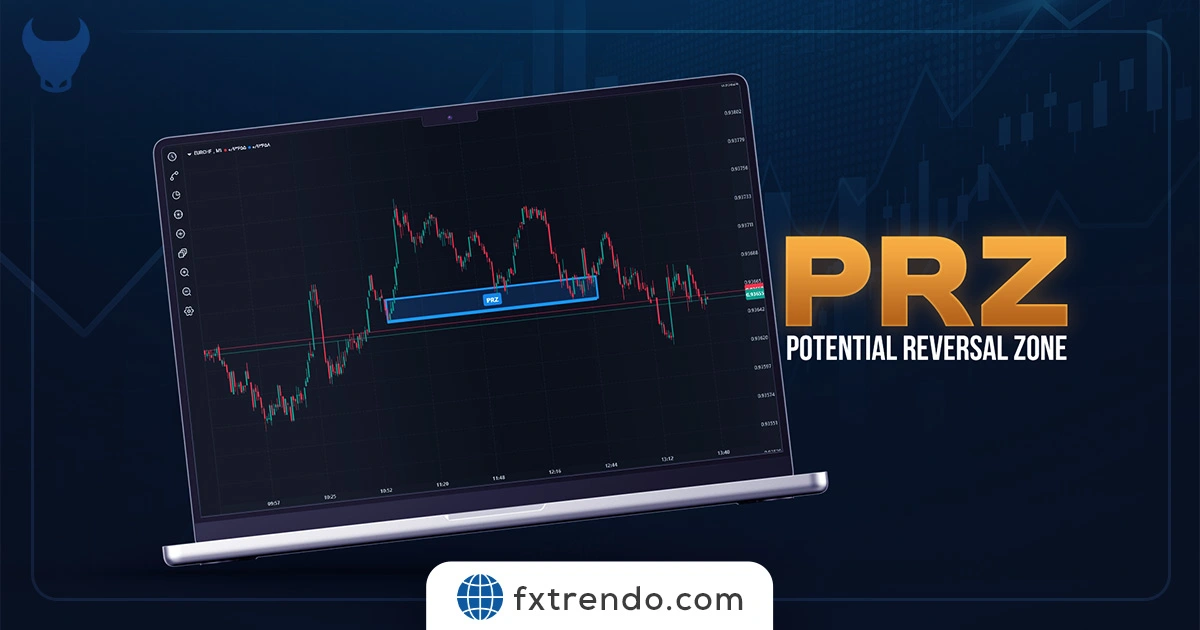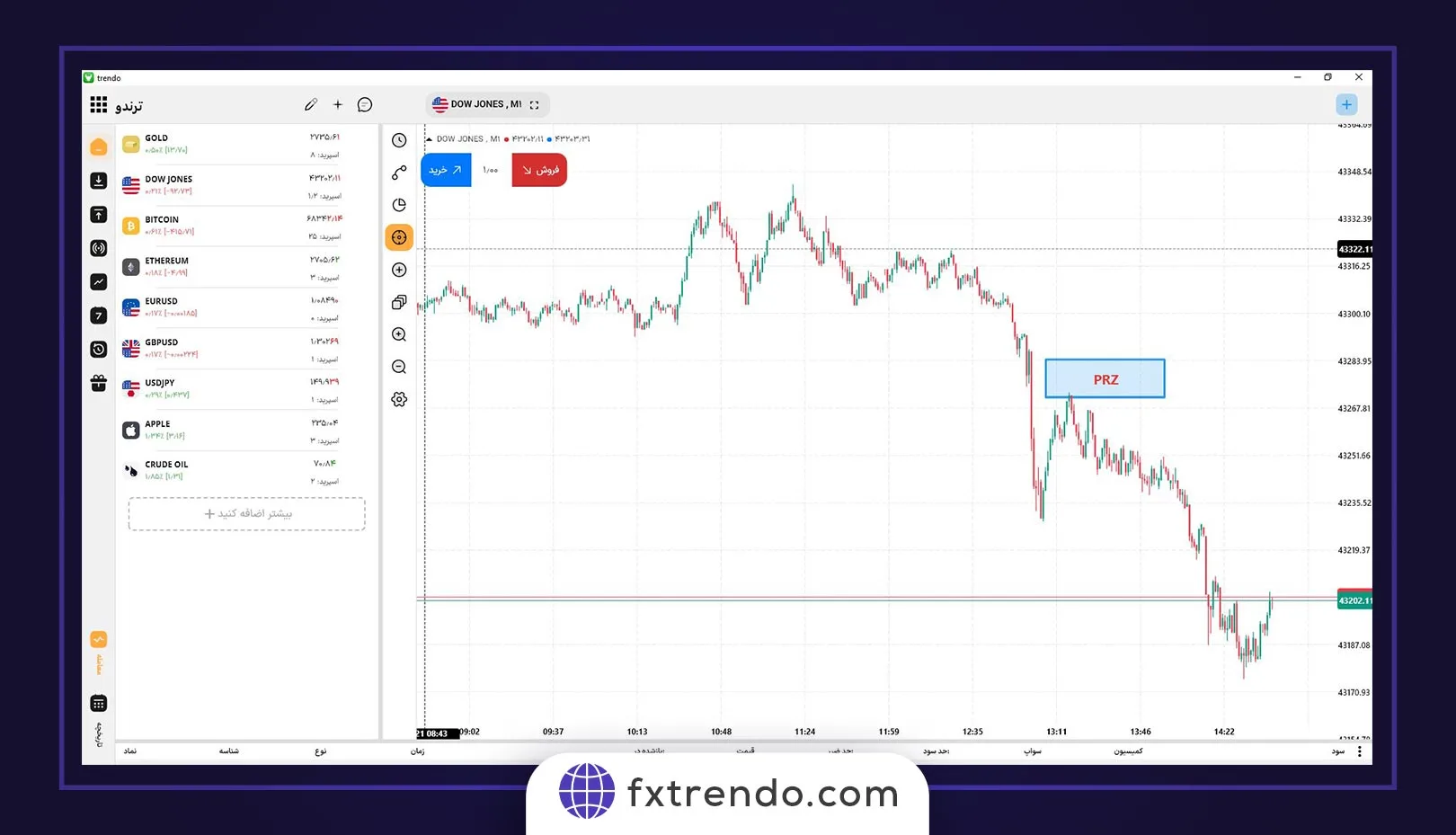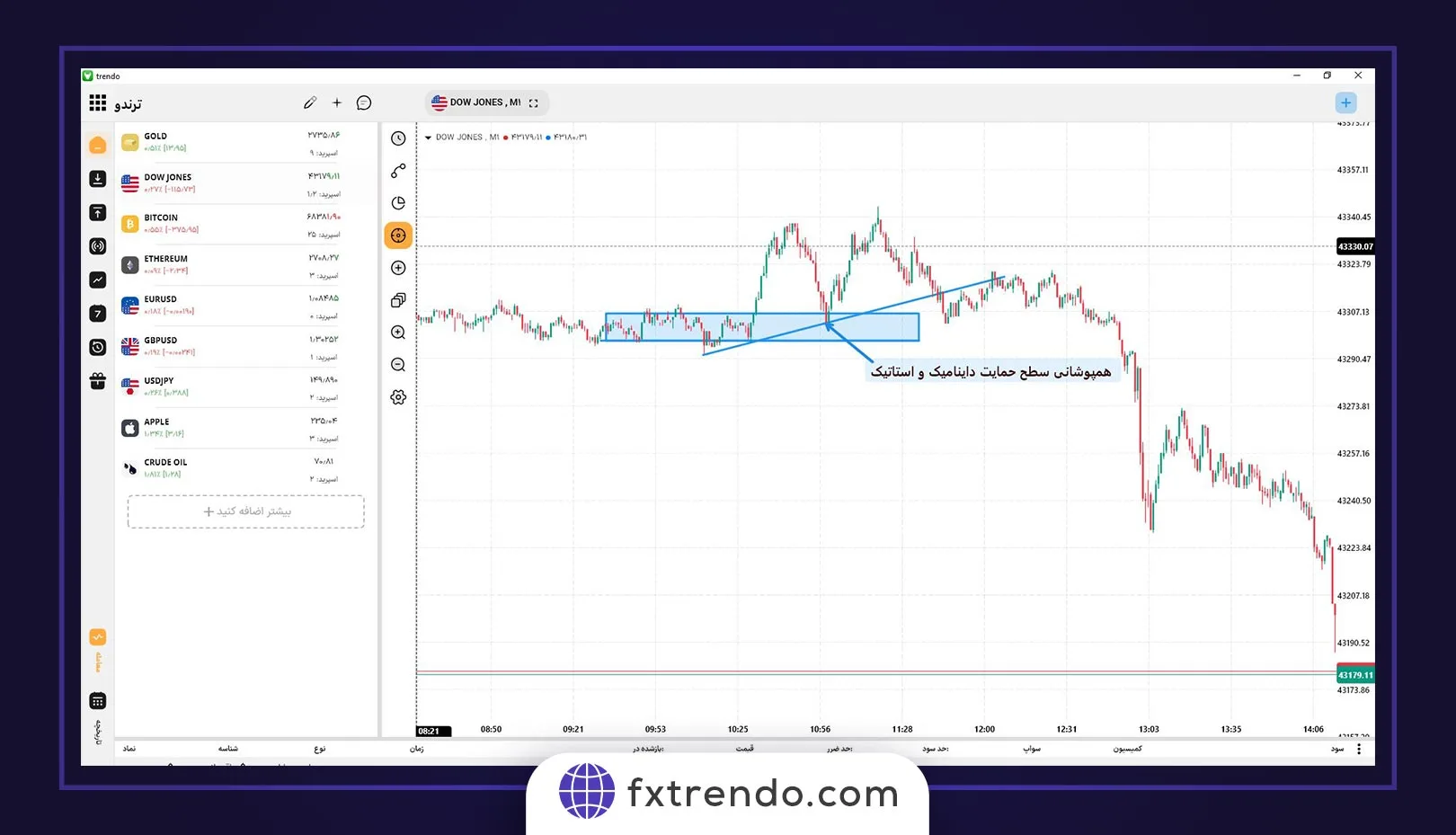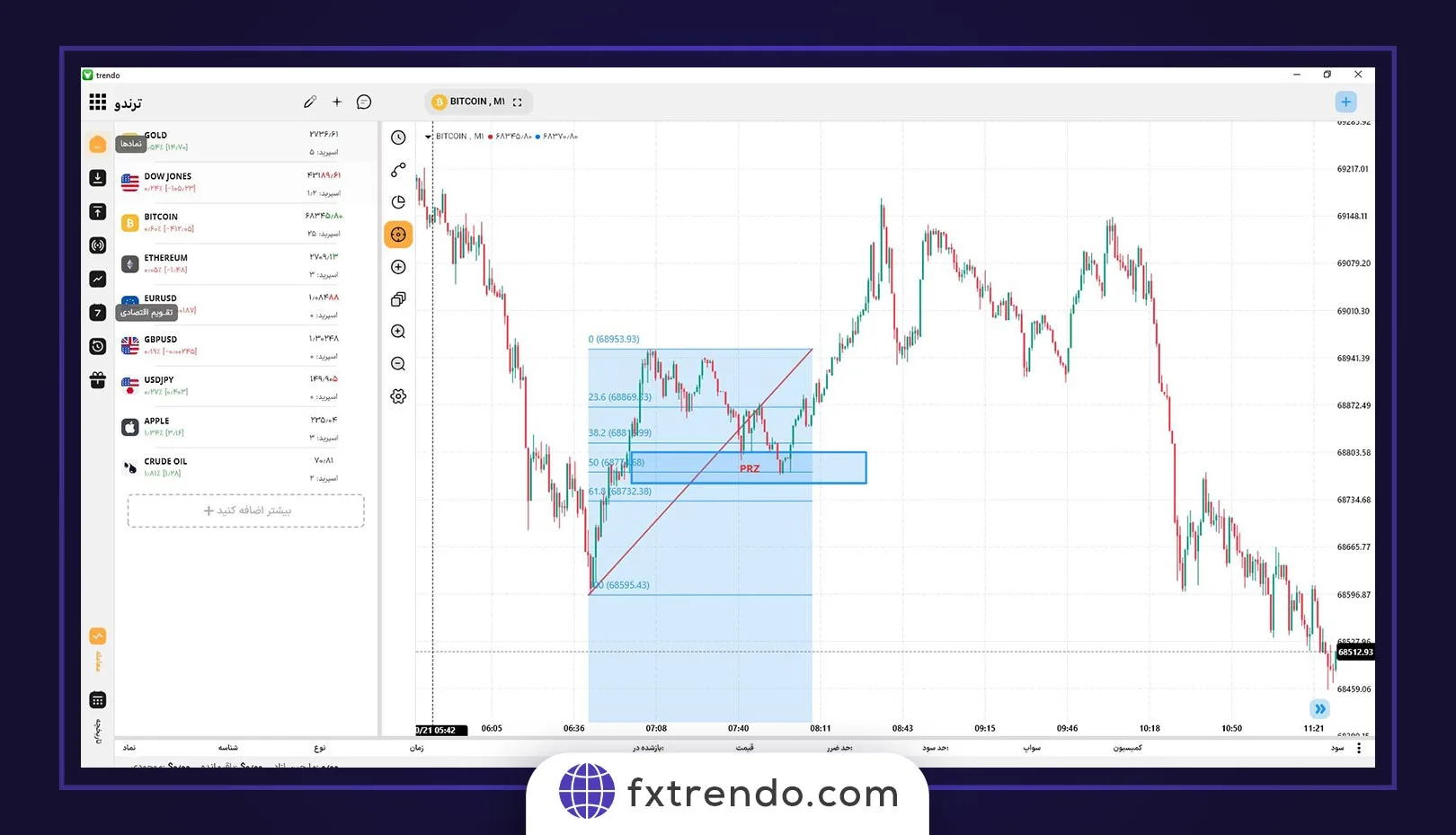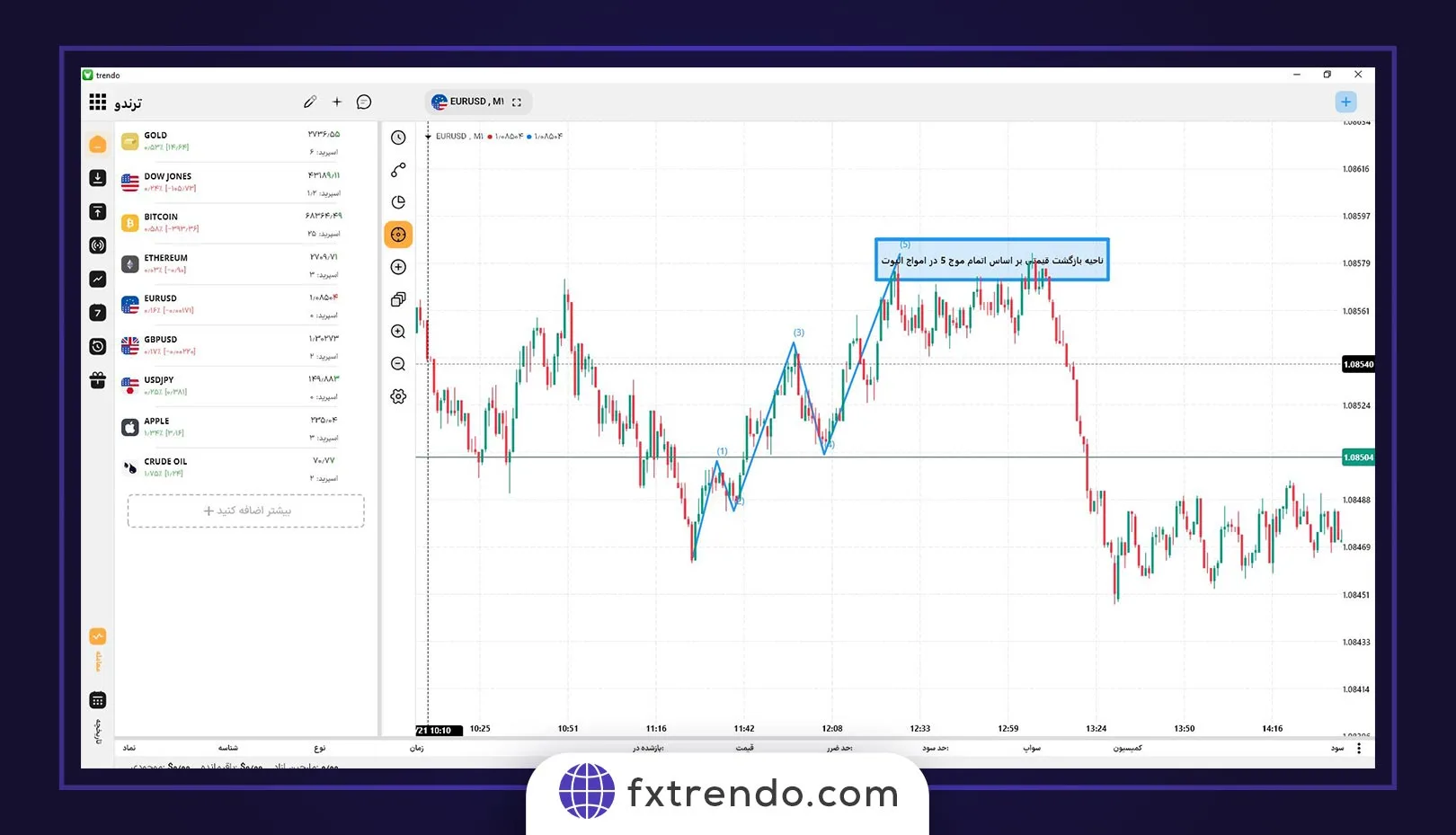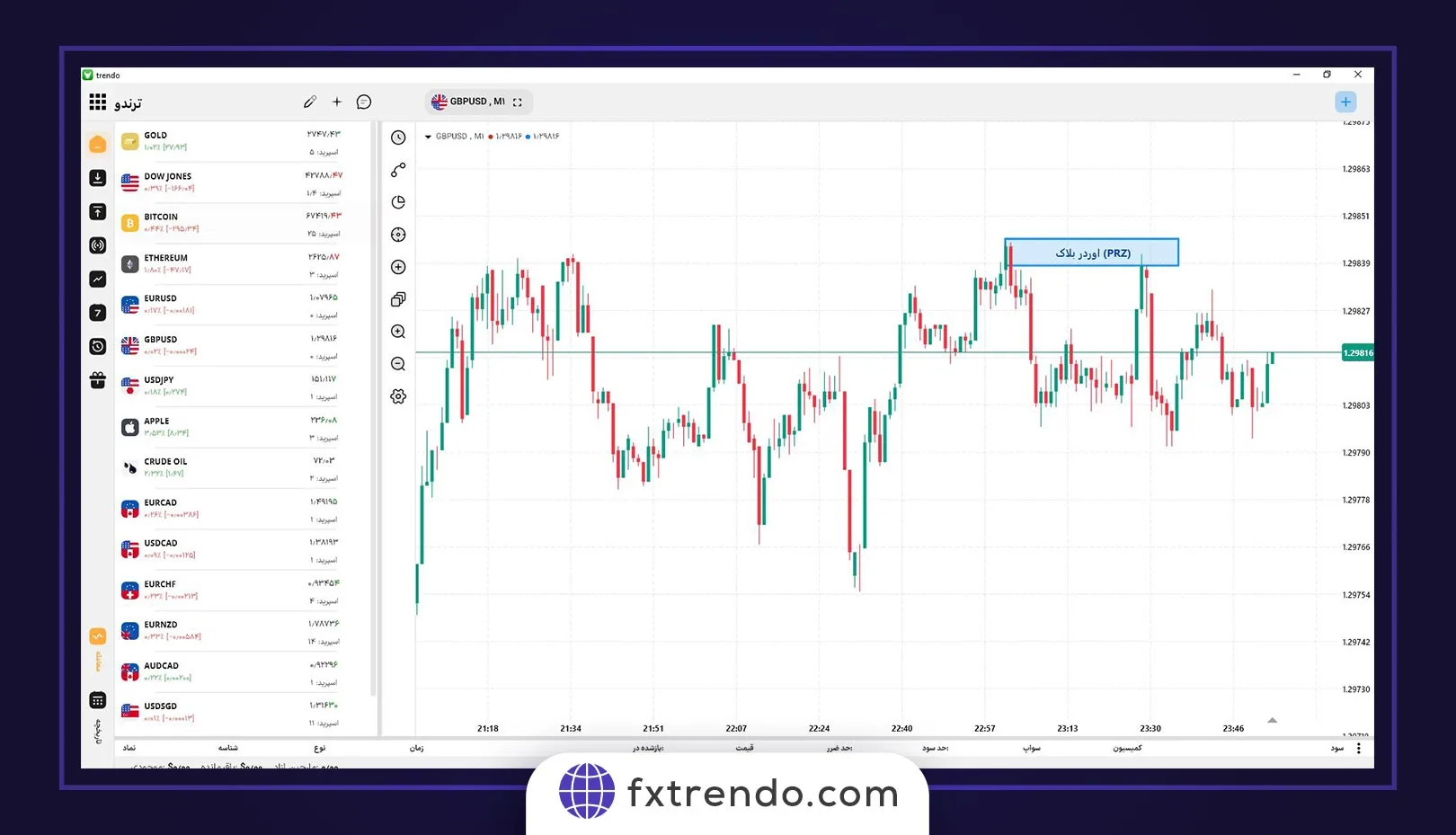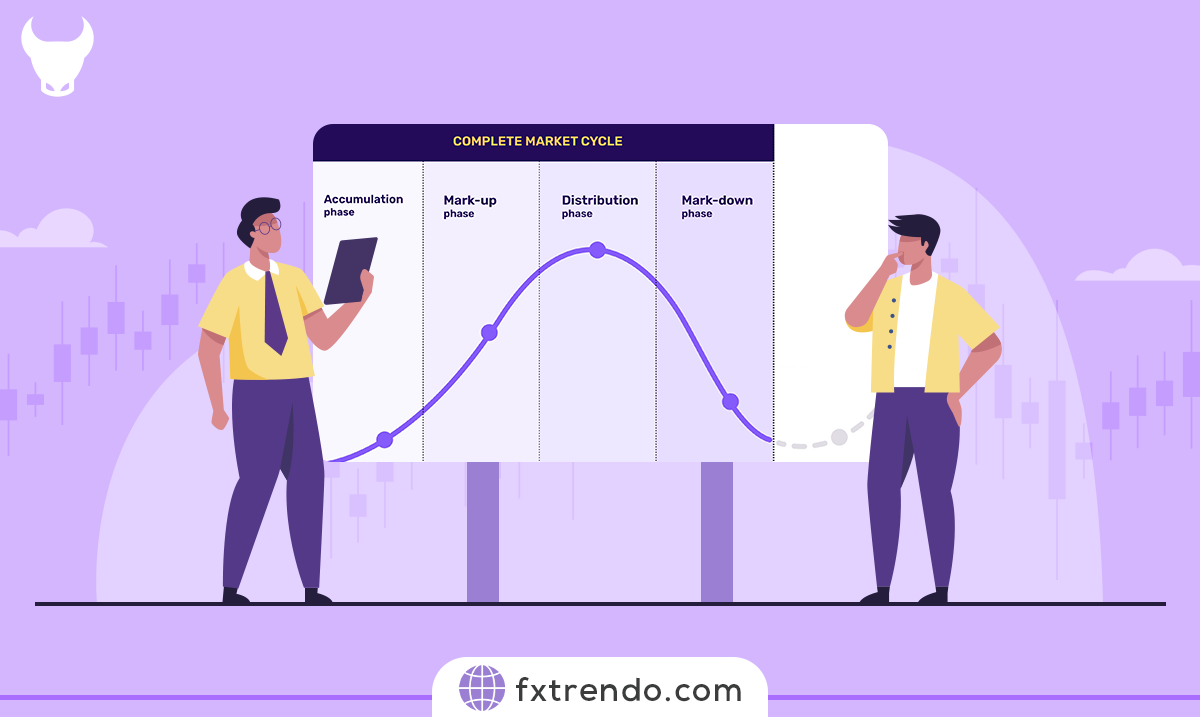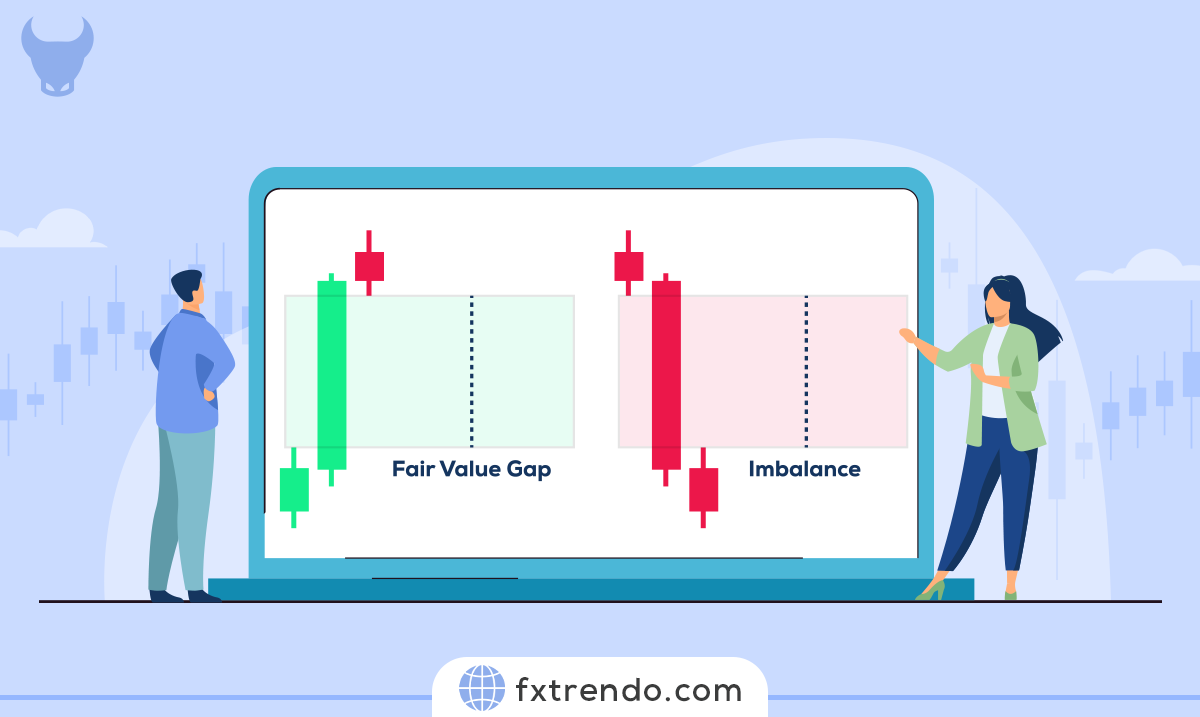To identify this zone, there are several methods, including the use of Fibonacci tools, Elliott waves, supply and demand principles, and more. Each of these methods is suggested based on a specific trading style, allowing traders to find the PRZ in a way that suits their approach.
If uncovering the PRZ or understanding price reversal zones sounds intriguing and valuable to you, then stay tuned as we dive deeper into this concept throughout the article.
What is a Potential Price Reversal Zone?
A Potential Price Reversal Zone (PRZ) refers to a specific area on a price chart where the likelihood of a trend reversal and price change is high. These zones are crucial for traders because, in these areas, the current market trend might shift, presenting opportunities to enter or exit trades.
Identifying the PRZ is an essential skill for many traders, as it can signal the perfect moment to take action.
PRZ zones are often identified using technical analysis tools such as Fibonacci retracements, Elliott waves, and harmonic patterns. Traders look for certain signs within these zones to confirm that a price reversal is likely.
These signs can include candlestick patterns, divergence in indicators, trendline breaks, or changes in trading volume. When these signals align, the chances of a price reversal within the PRZ are significantly increased.
Accurately identifying a Potential Price Reversal Zone can be a game-changer for traders, as it allows them to pinpoint the ideal time to buy or sell an asset. By making these informed decisions, traders can potentially maximize their profits and manage risks more effectively.
Ways to Find a Potential Reversal Zone
Identifying a Potential Price Reversal Zone (PRZ) is one of the most valuable skills a trader can develop. It allows traders to spot areas on a price chart where a trend may change, offering opportunities for profitable trades. There are various techniques in technical analysis that traders use to pinpoint these key areas where a price reversal is likely to occur. These methods range from using Fibonacci tools to Elliott waves and classic analysis. Let’s take a closer look at each of these methods.
1. Fibonacci Retracement
One of the most popular methods for identifying a PRZ is using Fibonacci retracement levels. This tool is based on the idea that after a price move, the market will often retrace a predictable portion of that move before continuing in the original direction.
Key Fibonacci levels like 38.2%, 50%, and 61.8% are often where price reversals occur. Traders use these levels to identify potential reversal zones, making it a vital tool in the trader’s toolkit. When multiple Fibonacci levels converge in a specific area, the likelihood of a price reversal increases dramatically.
These levels often indicate where the price may react and change direction after a strong upward or downward move. Traders frequently use this tool alongside other methods, such as candlestick patterns or divergences, to confirm price reversals and make more confident trading decisions.
2. Elliott Wave Theory
Elliott Wave Theory is one of the more complex, yet highly popular, methods for finding a Potential Price Reversal Zone (PRZ). This theory is based on the idea that prices move in predictable, repetitive cycles called waves.
Elliott Waves consist of five impulsive waves and three corrective waves that together form a complete cycle. PRZ zones often appear at the end of the fifth wave or the C wave, where the likelihood of a reversal increases.
By identifying these waves, traders can find key points of trend change. Especially when combined with other analytical tools like Fibonacci or divergences, these waves provide stronger signals for entering or exiting trades. This method helps traders make more informed decisions when analyzing both long-term and short-term market trends.
3. Classic Chart Patterns
Classic chart patterns like head and shoulders, double tops, and double bottoms are also excellent tools for identifying potential price reversals. These patterns suggest that the current trend is weakening and that a reversal may soon follow. Traders watch for these patterns to form, signaling that the market might be ready to shift direction.
In classical analysis, traders draw trendlines and mark support and resistance levels on the price chart to find points where the market might reverse. Support levels are areas where the price drops to a point and then rises again, as buyers become more active.
Resistance levels are areas where the price increases but then falls because sellers take control. When a trendline intersects these levels, it is often seen as a high-probability reversal zone. For example, when an upward trendline meets a resistance level, it may signal a potential price decrease.
4. Harmonic Patterns
Harmonic patterns such as the Gartley, Bat, and Butterfly patterns are advanced chart formations that use precise Fibonacci measurements. These patterns are useful for identifying areas where price is likely to reverse, especially when combined with other indicators.
Harmonic analysis offers a more detailed approach to finding PRZs, as it combines symmetry and Fibonacci relationships. By analyzing the structure of these patterns, traders can pinpoint high-probability reversal zones with a higher degree of precision.
5. Supply and Demand Price Action
Price action based on supply and demand is one of the most effective methods for identifying a Potential Price Reversal Zone (PRZ). Traders who follow strategies like smart money or ICT focus on areas where the balance between buyers and sellers is disrupted. These areas are commonly referred to as supply and demand zones, where the price tends to reverse due to significant buying or selling pressure.
For example, order blocks are key supply and demand areas where a strong market reaction typically occurs when the price approaches them. Traders using price action in these areas can identify better entry and exit points for their trades, allowing them to profit from price reversals.
In this method, it’s crucial to pay attention to price behavior and confirmatory signs like candlestick patterns or divergences to enhance the accuracy of trade setups.
Each of these methods has its strengths and can be used in combination to identify high-probability reversal zones. By mastering these techniques, traders can increase their ability to predict price movements and make more informed decisions.
Applications of the PRZ Zone in Trading
The Potential Price Reversal Zone (PRZ) is one of the most powerful tools in financial trading, helping traders pinpoint key levels for entering or exiting trades with greater precision. These zones are areas where the likelihood of a price trend reversing is high, which can present excellent trading opportunities. Here, we will discuss some of the main applications of the PRZ zone in trading.
1. Identifying Optimal Entry and Exit Points
One of the primary applications of the PRZ zone is identifying ideal entry points for trades with a high probability of success. When the price reaches a PRZ, and confirmatory signals like indicator divergences, reversal candlestick patterns, or increased trading volume appear, traders can seize this opportunity to enter the market. In such cases, it becomes much more likely that the price will reverse from the PRZ, initiating a new trend.
Additionally, the PRZ zone is also crucial for determining optimal exit points. In cases where significant profits have already been made, a price reaching a PRZ can signal the right moment to exit a trade, thus protecting gains and preventing potential losses.
By monitoring the PRZ, traders can make informed decisions about when to lock in profits and avoid staying in a trade for too long, which may lead to a reversal of the market’s direction.
2. Risk Management
Another critical use of the PRZ zone in trading is risk management. By identifying PRZs, traders can better position their stop-loss orders to minimize potential losses. For instance, when a trader decides to enter a long position at a PRZ, they can place their stop-loss just below the zone. This way, if the zone fails and the price continues to move against them, the trader’s loss is limited, and they exit the trade early to prevent a deeper drawdown.
This application is particularly important for traders who rely on price action strategies or harmonic patterns.
In these strategies, PRZs are considered important reversal levels, so positioning stop-loss orders near these zones can help reduce risk and increase the accuracy of trades. A well-placed stop-loss can act as a safeguard, ensuring that traders don’t lose more than their predetermined risk tolerance in case the market moves unexpectedly.
3. Enhancing Profitability
Properly utilizing the PRZ zone can significantly enhance the profitability of trades. By accurately identifying areas where price reversals are likely, traders can enter trades at favorable points and capitalize on significant price movements within these zones.
For example, if the price enters a PRZ during a downtrend and reverses sharply upward, this reversal can provide traders with a substantial profit opportunity. By entering at the right time, traders can profit from price shifts within the PRZ zone.
Furthermore, PRZs also play a crucial role in long-term trading strategies. Long-term traders can use PRZs to identify prime entry points during broader market cycles. By aligning trades with the primary trend and entering at high-probability reversal zones, traders can benefit from substantial price movements in the direction of the main trend.
This approach helps traders capture larger swings and increases the chances of achieving greater profitability over time.
The PRZ zone is a versatile tool that can be used to optimize entry and exit strategies, manage risk effectively, and increase profitability. Whether you’re trading short-term or long-term, understanding how to identify and apply the PRZ can significantly improve your overall trading success.
Conclusion
Understanding and identifying the Potential Price Reversal Zone (PRZ) can make a significant difference in how you approach trading. These zones help you pinpoint areas where market trends are likely to change, giving you a better chance of making informed and profitable decisions.
By using tools like Fibonacci retracements, Elliott Waves, and price action based on supply and demand, you can access key market points and trade with more precision. These methods allow you to identify optimal entry and exit points, helping you avoid major risks and increase your chances of success.
The PRZ zone provides you with a more focused approach to your trades, helping you to enter the market at the right time and capitalize on profitable price movements.
While mastering this skill requires experience and practice, once you get the hang of it, you’ll be able to make better decisions and experience increased profitability. So, always keep an eye on these zones and incorporate them into your trading strategy. By doing so, you can enhance your trading outcomes and boost your confidence in the market.
